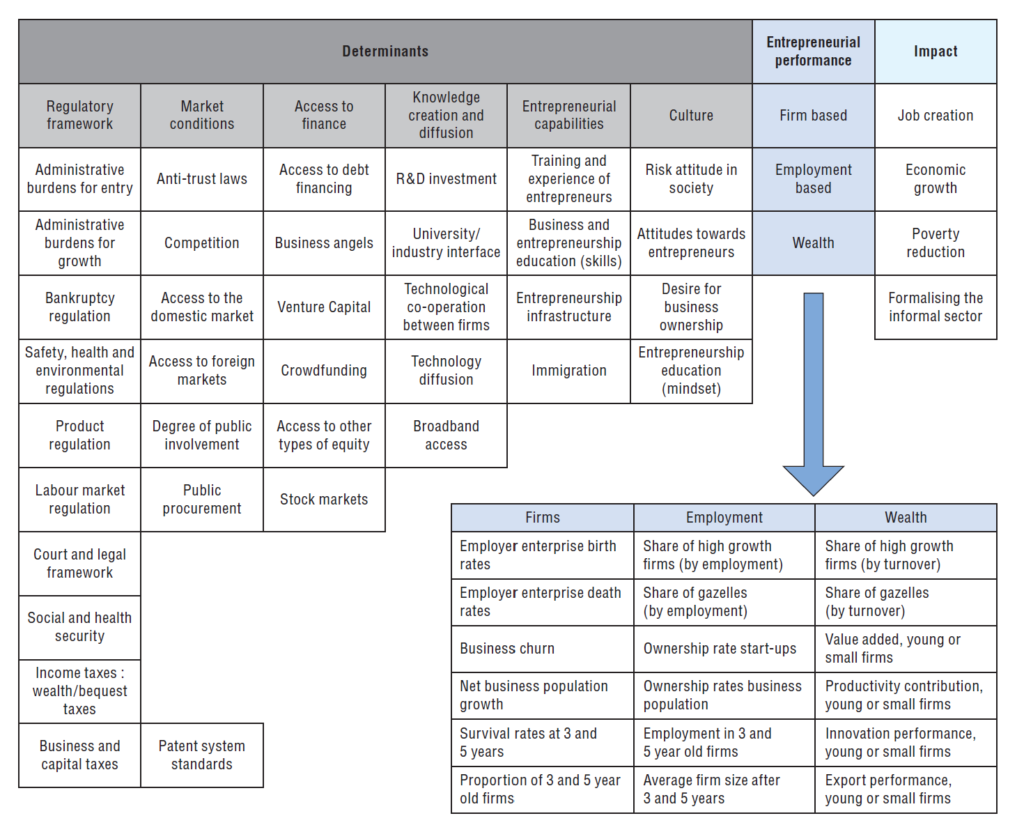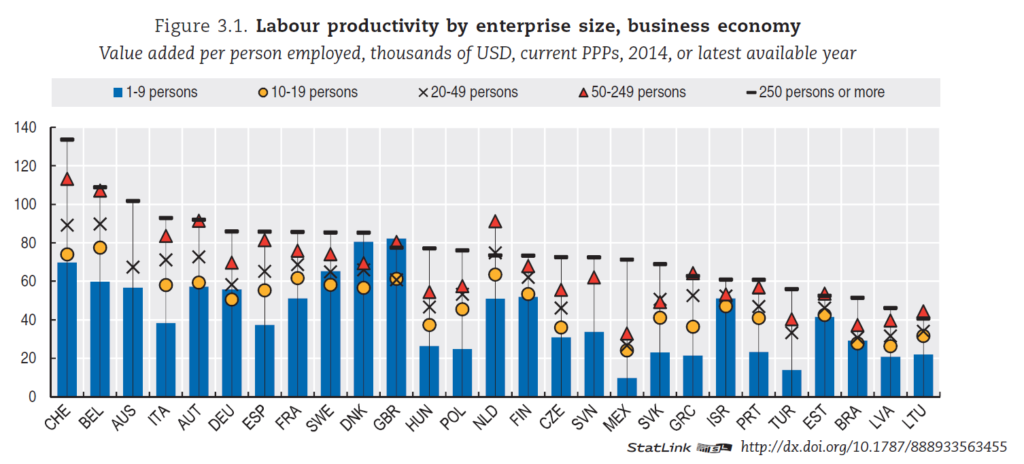OECD report on Australian Entrepreneurship and the Entrepreneurship Indicators Programme
It can seem like there are any number of ways to measure innovation and entrepreneurship in a region. In just the last two weeks we looked at the Measures of Australia’s Progress by the ABS, regional adaptive capacity by the Australian Productivity commission, and regional GRP by SGS Economic and Planning. Further live indicators are available from the Australian Innovation Monitor. It’s not a surprise that the a formal review is underway for Australia’s Innovation Indicators.
But thankfully there are only a set number of approaches and it is possible to get our head around them. One approach we can learn much from is the work the OECD has been doing since 2005.
OECD-Eurostat Entrepreneurship Indicators Programme (EIP) & Entrepreneurship at a Glance
The OECD-Eurostat Entrepreneurship Indicators Programme (EIP) came about as a result of an outcome from the 2004 OECD Ministerial meeting in Istanbul. The Centre for Entrepreneurship, SMEs, Regions and Cities was established and several initiatives were developed with financial support from the Kauffman Foundation.
Outcomes included: a 2005 experts workshop; a 2006 report on international comparability of start-up rates; a 2006 proposed framework for business demography statistics; and a scoping report – Understanding Entrepreneurship: Developing Indicators for International Comparisons and Assessments.
In September 2006, the OECD Entrepreneurship Indicators Programme (EIP) was launched to “develop multiple measures of entrepreneurship and its determinants according to a conceptual framework that distinguishes between the manifestation of entrepreneurship, the factors that influence it, and the impacts of entrepreneurship on the economy”.
Entrepreneurship is defined as:
The phenomenon associated with entrepreneurial activity.
Entrepreneurial activity is defined as:
“The enterprising human action in pursuit of the generation of value, through the creation or expansion of economic activity, by identifying and exploiting new products, processes or markets.”
The EIP provides a framework of 24 indicators that provide information on: Determinants, Entrepreneurial performance; and Impact. From 2013, the OECD has released annual Entrepreneurship at a Glance reports that provide detailed information about each indicator.
The diagram below from the 2018 report outlines the framework.

The framework does not result in a single ranking number, but presents information about each indicator for all countries where there is comparable and reliable data. The example below is for productivity, showing Australia ranking relatively high for productivity of large firms and slightly above average for smaller firms.

OECD SME and Entrepreneurship Outlook – Australia in focus
For a detailed report on Australia, the OECD SME and Entrepreneurship Outlook provides an overview of activity by country. The framework used is different to the Entrepreneurship Indicators Program and presents data across six dimensions:

The report looks at SMEs and entrepreneurship. An SME is broadly defined as “all enterprises with less than 250 persons employed.”
For Australia, SMEs represent a large number of total businesses:

The report provides a detailed overview of Australian performance. Small enterprises provide a proportionately large contribution to the economy.

These are largely in the services and manufacturing sectors:

The report outlines that new businesses are in sectors with below average productivity, such as construction (24%), wholesale and retail trade (17%), and accommodation and food services (15%) whereas high-skill and high-productivity sectors such as ICT account for 5% of new enterprises.

The overall entrepreneurial situation for Australia is mixed, which is a well-known challenge. The nation has the inherent capability in the people.

However, collaboration and the funding needed to rapidly growth small firms is low.

In general terms, Australian’s feel they have the capabilities to be entrepreneurial and have intentions to start businesses, but fear of failure can hold them back.

Next steps
The OECD reports provide a good overview of Australia and relative benchmarking against other countries. There is a growing body of work to get more accessible and timely data to help policy makers and program managers make better decisions to support local entrepreneurs.
The journey over the next few weeks will take us into the Global Entrepreneurship Monitor, a comprehensive survey of entrepreneurial intentions and activity in Australia.
These posts act as a 30-minute scratch pad for my own thoughts and to share the journey with others. Thanks for reading and being a part. Please take what adds value. Feedback is always welcome.
Interesting results. I write my post graduate thesis about the connection between fixed structures in a person’s private area and the likeliehood of that person starting a business.
Fixed structures can be fixed family structures, permanent living space etc.
Did you collect data from this field aswell? I would be very curios to take a look at them.